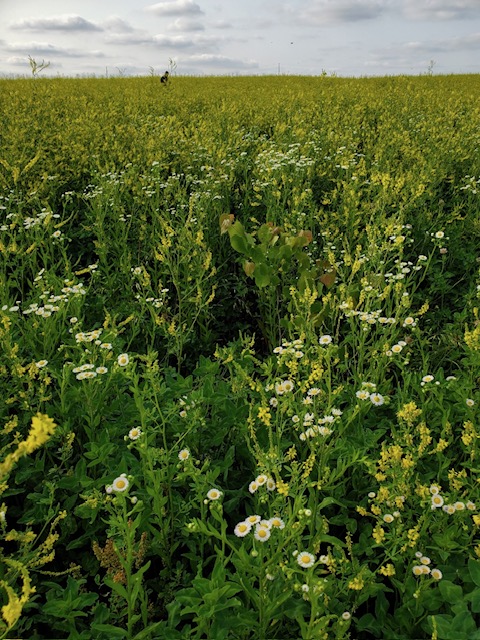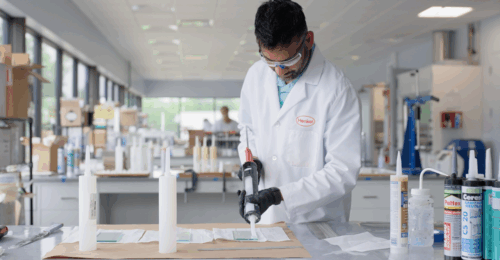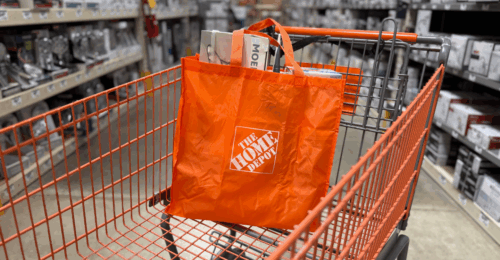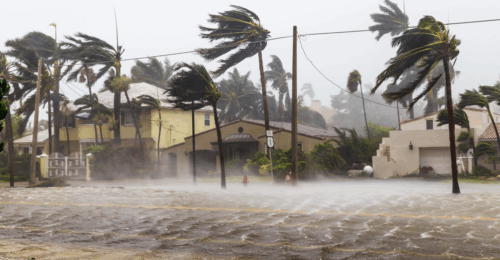Within The Home Depot, there is a large contingency of eco-conscious associates. They call themselves the Sustainability Squad. They are living a DIY sustainability lifestyle – living proof that Eco Actions make a difference. Each month, we interview members of the Sustainability Squad to learn more about their inspiration and motivation behind their Eco Actions.
This month, we talked with Dan Knuth, a Pro Account Sales Associate for 22 years with The Home Depot in Fort Wayne, IN. Dan had a vision of creating his own wooded area to pass on to his family and started working toward that goal. Recently, Dan shared his reforestation project with the Sustainability Squad, documenting the process of converting an old farming tract into a wooded area covered with nearly 2,000 trees and filled with wildlife. We chatted with Dan about the beginnings of his reforestation project, his plans for the future and how others can create their own forest.
EA: We want to know the story from the beginning. How did you find this land, and what made you decide to tackle this reforestation project?
DK: Some of my friends were driving out in the country and saw that someone had just put a ‘For Sale by Owner’ sign out in the field. Within just a few hours, we made contact. My fiancée and I were looking for a wooded area to eventually build on and have a place for the future. After [we purchased], we contacted a forester and met with him multiple times. He created a plan based on what we wanted.
 EA: How did you go about choosing the species of trees and cover crop?
EA: How did you go about choosing the species of trees and cover crop?
DK: The forester that we hired had planted close to seven million trees, so my project was just a drop in the bucket at 2,000 trees. He was able to see satellite images that we have that show soil qualities, and what’s in the soil in our area. He used that information for soil content at the low and high ends [of the property]. What could take water? What could withstand drought? He pretty much put the plan together for the trees based on having windbreaks and decorative trees. For the cover crop, we chose clover because it will break up the very dense clay soil and produce nitrogen to provide nutrients for the new trees, as well as shake out all the weeds. We also got bees. I went out there the other day, and it sounded like standing under an electrical line, the hum was so intense. I don’t even know how many thousands or millions of honeybees we have around.
EA: Do you have any other wildlife out there?
DK: We see birds and butterflies. There are rabbits kicking around out there, too. It’s just crazy. The plot went from a soybean field, which is nothing half the year, to plenty of wildlife coming in. The deer really love it, too.
EA: It sounds like it’s a little bustling oasis of forest out there.
DK: It is, yeah. It’s nice to go out there to see wildlife, and how things are just naturally growing. There are some trees, different flowers and clovers I didn’t even plant that are starting to pop up now because we’ve left it untouched for two years. Some of the trees are about three feet tall, so within three to four years, they’ll be close to 12 feet.
EA: What do you hope for the future of your plot of land?
DK: We have a couple of plans currently. We just want to keep it self-sustaining and let the trees go nuts. Right now, we’re just letting it grow. The overall goal would be to build in the middle of the plot. The second option is just let it go and keep planting trees. That will create a tree crop that my kids can harvest 20 or 30 years down the road. I want them to keep it in the family.
EA: That’s wonderful! It’s great that you’re leaving behind a little green space for the people around you and for your family.
DK: Yeah, there’s something about knowing that the shade tree you sit down underneath today was planted years ago. The best time to plant a new shade tree is today. It’s like investing in your 401k, so that’s how I look at that as well.
EA: I guess you could say you’re investing in your ‘Forest-1K’?
DK: Yes! There you go.
EA: If there are any other Home Depot associates or customers who would be interested in following in your footsteps, what tips would you give them to get started in their reforestation journey?
DK: First, you’ll need property. If they already have it, I highly recommend contacting a local forester with some options because it’s very inexpensive. You can also contact your local Department of Natural Resources or nursery or talk to local farmers. Just educate yourself on what you can do, and what’s available out there. Then you need to find someone who can plant it properly, and you need to have the equipment, too.
EA: What about people who have limited space?
DK: Even if you have a small area, even in your backyard, you could create different types of gardens and attract certain animals if you wanted to, like with pollinator gardens. You have plenty of options.
EA: Dan, thank you so much for sharing your story with us, and we can’t wait to share it with the Home Depot community.
DK: Thank you, this is pretty exciting. I put a lot of time and effort into [the reforestation], and I’m really proud of it.












